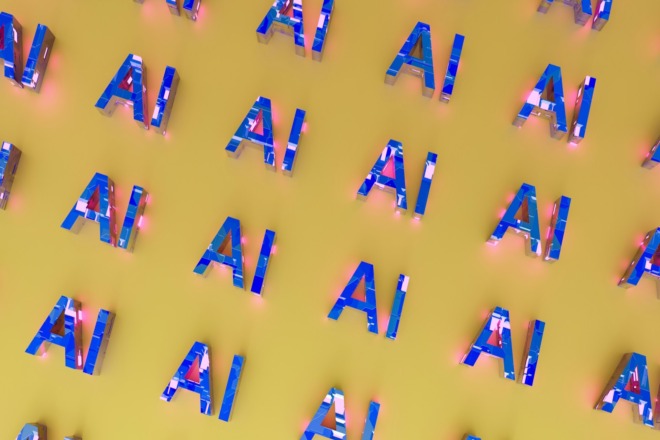Stable Diffusion is a cutting-edge AI technology that leverages deep learning models to generate high-quality images from textual descriptions. As you explore its capabilities, you’ll discover it doesn’t just create random pictures. It transforms the landscape of AI-driven image generation by making it more accessible and efficient.
This technology enables you, and others like you, to rapidly produce diverse and complex visuals. It significantly impacts creative fields and beyond by streamlining workflows and sparking new artistic and commercial expression forms. Whether you’re a developer, artist or entrepreneur, Stable Diffusion offers you the tools to innovate and expand the horizons of digital imagery.
What Is Stable Diffusion?
Stable Diffusion is an advanced AI technique that harnesses the power of deep learning to generate detailed images from textual descriptions. At its core, it uses a type of model known as the latent diffusion model.
It begins with a pattern of random noise, which, through a series of steps, gradually transforms into a clear, recognizable image. It’s like starting with a blank canvas and slowly adding layers of paint until you see a complete picture. This method allows you to input creative prompts and watch as the AI brings your ideas to life with stunning accuracy and detail.
The technology behind Stable Diffusion leverages various deep learning and machine learning principles, particularly in training the model to understand and interpret the nuances of human language and visual cues. The model is trained on a vast data set of images and their corresponding descriptions, learning to correlate specific words and phrases with visual elements.
For you, it means you can direct the AI with your own words and guide it to create everything from simple illustrations to complex scenes. It stems from the initial randomness to the structured visual output you desire.
Evolution of AI Image Generation
AI-driven image generation has come a long way since its inception in the late 1960s. It reached a significant milestone in 1973 when Harold Cohen developed Aaron, an AI system that produced black-and-white drawings. Back then, creating AI art was a novel and limited endeavor, primarily restricted to experimental and academic settings due to the technology’s nascent stage.
Fast forward to today, and you’ll see that technologies like Stable Diffusion have revolutionized this field. It operates at incredible speeds and produces high-quality, colorful images that surpass the simpler outputs of early systems like Aaron.
Moreover, it’s highly accessible, allowing anyone with basic technical know-how to generate complex artworks through straightforward prompts. This leap in speed, quality and accessibility has opened AI art generation to a broader audience, making it a tool for experts and creative minds everywhere.
Applications of Stable Diffusion in Various Industries
Stable Diffusion makes waves across various industries, demonstrating its versatility and transformative potential. In entertainment, filmmakers and video game developers use it to quickly generate detailed backgrounds and character designs, significantly reducing production times and costs.
Similarly, designers leverage this technology in the fashion industry. It visualizes new clothing patterns and styles to enhance creativity and speed up the design process. These applications allow you to push the boundaries of traditional methods. It offers a glimpse into a future where AI co-creates alongside humans to bring imaginative concepts to life more efficiently.
Beyond creative fields, marketing and advertising professionals also adopt this technology. Companies use AI to create eye-catching visuals for campaigns tailored to specific audiences with unprecedented precision. It cuts down on the resources typically required for content creation. This approach allows rapid testing and iteration of marketing strategies, helping you stay ahead in a competitive market.
In education, teachers and students utilize it to create illustrative content that enriches learning materials. This program makes complex subjects more accessible and engaging. These examples underline how Stable Diffusion is more than just a tool for generating images. It’s a multifaceted asset that enhances productivity and innovation across the board.
Ethical Considerations and Social Impact
Ethical concerns inevitably surface as you delve into AI-generated images, particularly the risk of producing misleading images or deepfakes. These AI creations can be indistinguishable from real photos or videos, posing challenges in news dissemination where authenticity is crucial.
Moreover, U.S. copyright laws recognize only human-created works. It leaves a legal gray area regarding the ownership and copyright of AI-generated content. This ambiguity could affect your rights as a creator, making it essential to navigate these issues with awareness and caution.
The social impact of AI in image generation extends into shifts in content creation, job dynamics and privacy concerns. As AI tools become more prevalent, traditional graphic design and photography roles are transforming. It can potentially displace jobs and create new opportunities in tech-driven creative fields.
Additionally, the ease of creating personalized content with AI raises privacy issues. This is particularly true as generating realistic images of people without consent becomes simpler. This evolving landscape requires you to stay informed and adaptable. Balance the benefits of innovation with the ethical implications and societal changes it brings.
Challenges and Limitations
One primary challenge in Stable Diffusion is the inherent biases in the data used to train the AI models. These biases can skew the AI’s output, influencing the aesthetics and the social perceptions it reinforces. For example, a revealing study found that it depicts high-paying professionals predominantly as men with lighter skin tones.
This bias underscores the importance of using diverse and inclusive data sets. The AI merely mirrors the data it’s trained on. Addressing these stereotypes is crucial to ensure that technology promotes equality rather than perpetuates existing disparities.
Technically, employing it comes with significant computational demands and resource usage. The process requires robust hardware and substantial energy. It can be a barrier for individual creators or smaller organizations without access to high-powered computing resources.
These limitations affect the scalability of your projects and impact how feasibly you can integrate AI into your workflow. Understanding and managing these technical requirements are essential to effectively leveraging stable diffusion. It ensures you maximize its potential while minimizing costs and resource consumption.
Technological Innovations Inspired by Stable Diffusion
Stable Diffusion technologies have spurred a wave of innovative tools and software. It revolutionized how you can interact with AI in creative processes. Exciting developments include user-friendly interfaces, real-time editing features and integration into mainstream design platforms, enhancing your creative toolkit.
Additionally, collaborations between tech companies and academic institutions are pivotal in advancing these technologies. These partnerships foster environments rich in innovation. It combines industry resources with academic insight to refine algorithms, enhance ethical frameworks and expand its capabilities.
Such collaborative efforts ensure the technology evolves rapidly and aligns with broader societal and ethical standards. It pushes the boundaries of what AI can achieve in creative and practical applications.
The Future of AI Image Generation
Looking ahead, the landscape of Stable Diffusion and AI image generation can significantly expand and innovate. The startup behind the model is reportedly in talks to raise $100 million from investors. So, you can anticipate a surge in development from increased funding and interest.
This influx of capital will likely catalyze new research. It can lead to breakthroughs in image quality, speed and the AI’s ability to understand and interpret complex visual prompts. Additionally, ongoing research focuses on making these technologies more accessible and sustainable, reducing computational costs and ensuring broader adoption.
As these advancements unfold, you can expect it to become even more integral in various fields. It can enhance how people create and interact with digital content across industries.
Shaping the Future with Stable Diffusion
Stable Diffusion is pivotal in shaping the future of AI applications, fundamentally changing how you interact with and utilize technology in creative and practical domains. Its development underscores a transformative era in AI, where enhanced capabilities and accessibility pave the way for innovative uses across all sectors.
About The Author
Eleanor Hecks is the Editor-in-Chief of Designerly Magazine, an online publication dedicated to providing in-depth content from the design and marketing industries. When she's not designing or writing code, you can find her exploring the outdoors with her husband and dog in their RV, burning calories at a local Zumba class, or curled up with a good book with her cats Gem and Cali.
You can find more of Eleanor's work at www.eleanorhecks.com.


